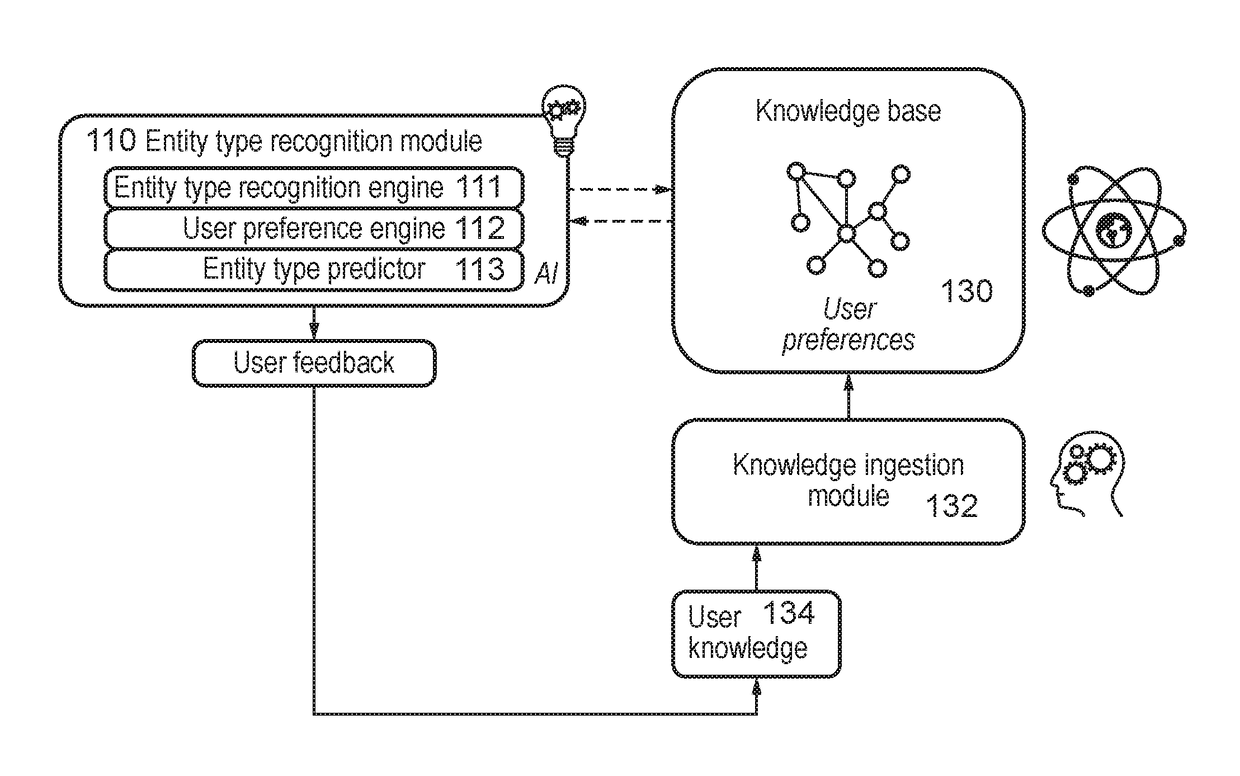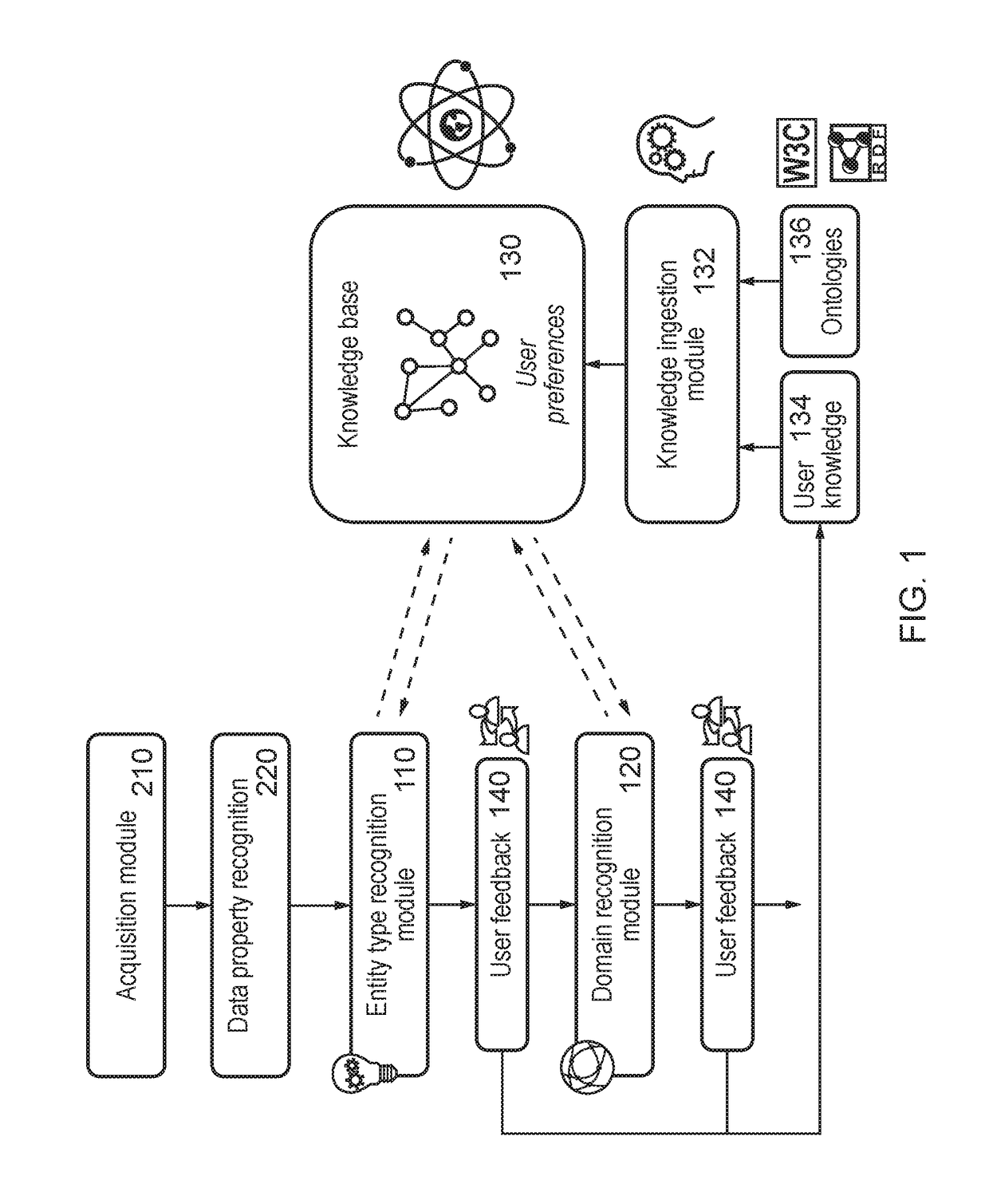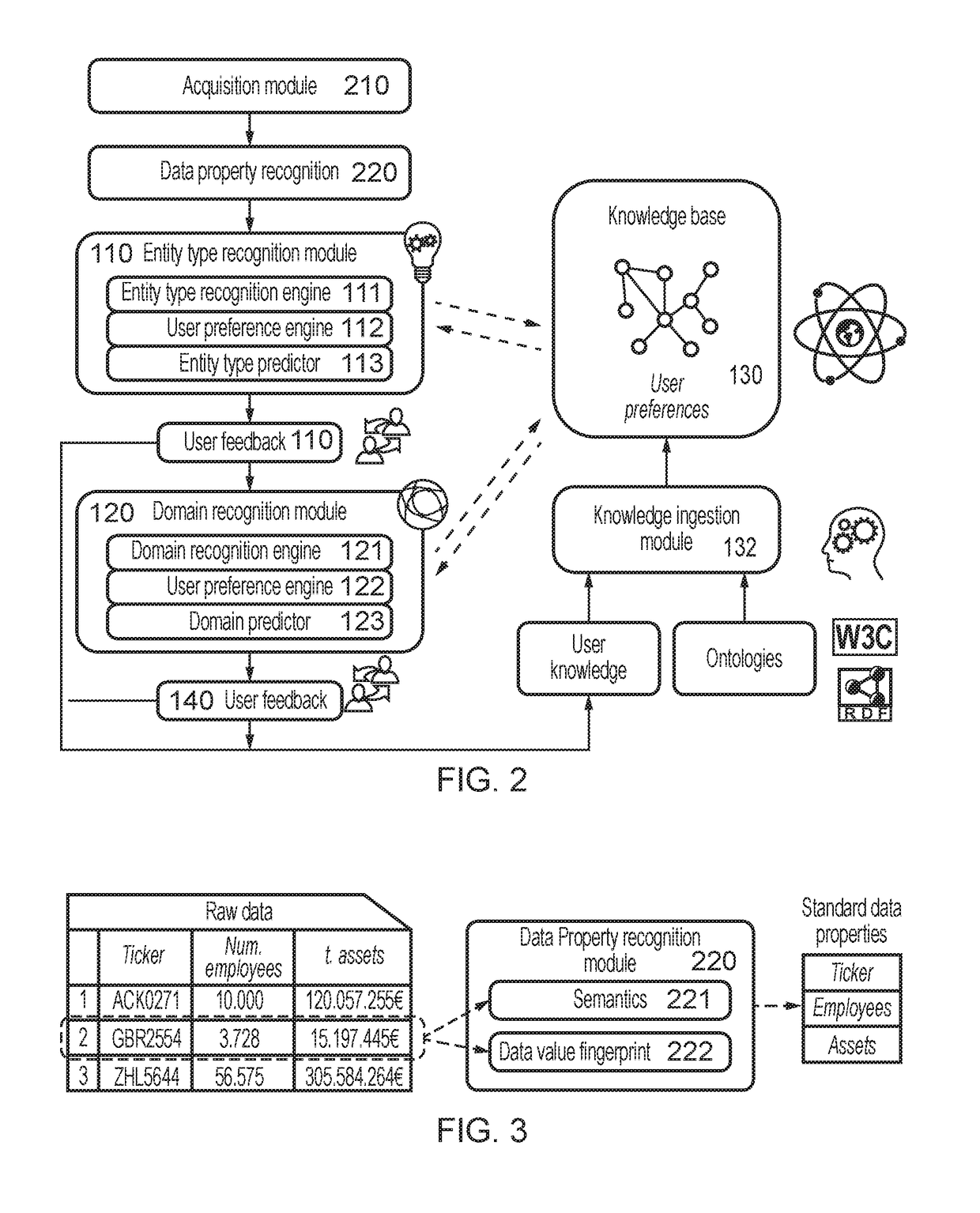System, method, and program for reconciling input datasets with a model ontology
a model ontology and input dataset technology, applied in the field of data storage, can solve problems such as the integration of input datasets from heterogeneous data sources
- Summary
- Abstract
- Description
- Claims
- Application Information
AI Technical Summary
Benefits of technology
Problems solved by technology
Method used
Image
Examples
Embodiment Construction
[0038]Reference will now be made in detail to the embodiments, examples of which are illustrated in the accompanying drawings, wherein like reference numerals refer to the like elements throughout. The embodiments are described below by referring to the figures.
[0039]A note regarding terminology: In the below description and claims, a plurality of quotients will be defined and discussed. A quotient is attributed a label from “ontology” and “relation”. A “relation quotient” represents user input assignments, and may comprise a “user component” representing user input assignments of a specific user, and a “collective component” representing user input assignments of a population of users collectively. An “ontology quotient” represents relationships in the model ontology graph. A quotient is also attributed a label from “first”, “second”, and “third”, these labels denoting positions of the nodes in the hierarchy. A “first . . . quotient” is between a second level node and a first level...
PUM
 Login to View More
Login to View More Abstract
Description
Claims
Application Information
 Login to View More
Login to View More - R&D
- Intellectual Property
- Life Sciences
- Materials
- Tech Scout
- Unparalleled Data Quality
- Higher Quality Content
- 60% Fewer Hallucinations
Browse by: Latest US Patents, China's latest patents, Technical Efficacy Thesaurus, Application Domain, Technology Topic, Popular Technical Reports.
© 2025 PatSnap. All rights reserved.Legal|Privacy policy|Modern Slavery Act Transparency Statement|Sitemap|About US| Contact US: help@patsnap.com



